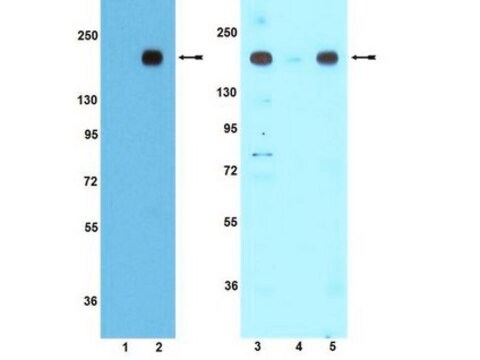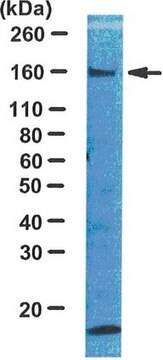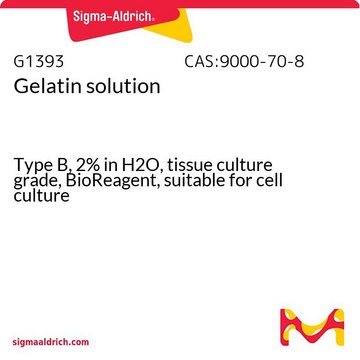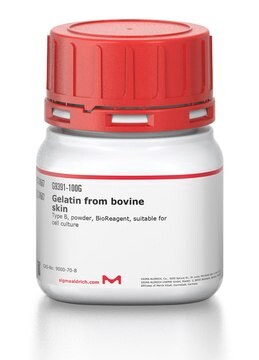05-784R
Anti-IRS1 Antibody, clone 58-10C-31, rabbit monoclonal
clone 58-10C-31, from rabbit
Synonym(s):
insulin receptor substrate 1
About This Item
Recommended Products
biological source
rabbit
Quality Level
antibody form
purified immunoglobulin
antibody product type
primary antibodies
clone
58-10C-31, monoclonal
species reactivity
human, rat, mouse
technique(s)
immunoprecipitation (IP): suitable
western blot: suitable
isotype
IgG
NCBI accession no.
UniProt accession no.
shipped in
dry ice
target post-translational modification
unmodified
Gene Information
human ... IRS1(3667)
General description
Specificity
Immunogen
Application
Metabolism
Insulin/Energy Signaling
Immunoprecipitation Analysis: 1 µg from a previous lot immunoprecipitated IRS-1 from 100 µg of MCF7 cell lysate. Arrow indicates IRS-1 (~160 kDa). There is cross reactivity of the detection antibody with the heavy chaing of Rabbit IgG as shown at ~50 kDa.
Quality
Western Blot Analysis: 0.1 µg/mL of this antibody detected IRS-1 on 10 µg of 3T3/A31, 3T3/L1, L6, or MCF7 cell lysates.
Target description
Physical form
Storage and Stability
Handling Recommendations: Upon receipt and prior to removing the cap, centrifuge the vial and gently mix the solution. Aliquot into microcentrifuge tubes and store at -20°C. Avoid repeated freeze/thaw cycles, which may damage IgG and affect product performance.
Note: Variability in freezer temperatures below -20°C may cause glycerol containing solutions to become frozen during storage.
Analysis Note
3T3/A31, 3T3/L1, L6, or MCF7 cell lysates
Other Notes
Disclaimer
Not finding the right product?
Try our Product Selector Tool.
Storage Class
12 - Non Combustible Liquids
wgk_germany
WGK 1
flash_point_f
Not applicable
flash_point_c
Not applicable
Certificates of Analysis (COA)
Search for Certificates of Analysis (COA) by entering the products Lot/Batch Number. Lot and Batch Numbers can be found on a product’s label following the words ‘Lot’ or ‘Batch’.
Already Own This Product?
Find documentation for the products that you have recently purchased in the Document Library.
Our team of scientists has experience in all areas of research including Life Science, Material Science, Chemical Synthesis, Chromatography, Analytical and many others.
Contact Technical Service






